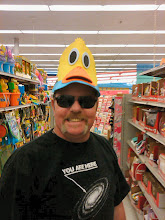Monday, February 23, 2009
Comet Lulin at the Luz Obsrvatory
Wednesday, January 28, 2009
Sidewalk astronomy
March, and the Messier Marathon grows near! AGAIN!
In the latter part of the eighteenth century, astronomers gained fame and wealth by discovering comets, still thought to foretell the future. One of these skywatchers was Charles Messier, who observed from Paris. Occasionally, M. Messier would chance upon a whitish blob, such as comets look when they are first seen. On August 28, 1758, he spotted such an object. Unfortunately, after watching it for a few evenings, he found that the blob maintained the same position among the stars, unlike a comet. Determined not to be fooled if he encountered the same object in the future, Messier determined and saved its coordinates. Over the next several decades, with the help of his colleague Pierre Méchain, many other entries were made in a list of deceivers. The list now contains 110 objects (though historians quarrel about the exact number), and are referred to as M1 through M110. A few objects had incorrect coordinates or may have been duplicates. It is generally agreed now that M101 and M102 are the same.This list has become the beginning observer's guide book, for it contains most of the interesting celestial objects to be found with a small (4" diameter) telescope. These objects include reflection nebulae, emission nebulae, planetary nebulae, open clusters, globular clusters, spiral galaxies and elliptical galaxies. Objects of all these types can look like a blob. (Modern telescope usually see open clusters as individual stars, but with the crude telescope Messier used many clusters looked like small clouds.) Interestingly enough, the first false comet Messier discovered was different from the rest. M1 is the Crab Nebula, the detritus from a supernova explosion.I mention all this because around the spring equinox it is possible to see all the Messier objects in a single night (sunset to sunrise). Only at this time are all of them far enough from the Sun to be seen sometime during the night (although M30 is quite difficult from latitude 40° north). Amateur astronomers call such an attempt a Messier Marathon. You'll need a dark sky, a medium-sized scope (4 to 8 inches in aperture, depending on experience), coffee, snacks and warm clothing. Of course you can see all of Messier's menagerie in bite-size chunks -- twelve monthly expeditions, four seasonal trips and so forth. But where's the fun in that? ?
Labels:
amateur astronomy,
astronomy,
binoculars,
camping,
eyepiece,
messier,
Observatory,
observing,
optics,
telescope,
Telescopes
Renting the 60" Mt. Wilson reflector telescope!
Subscribe to:
Comments (Atom)




